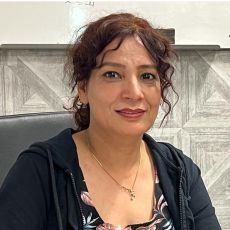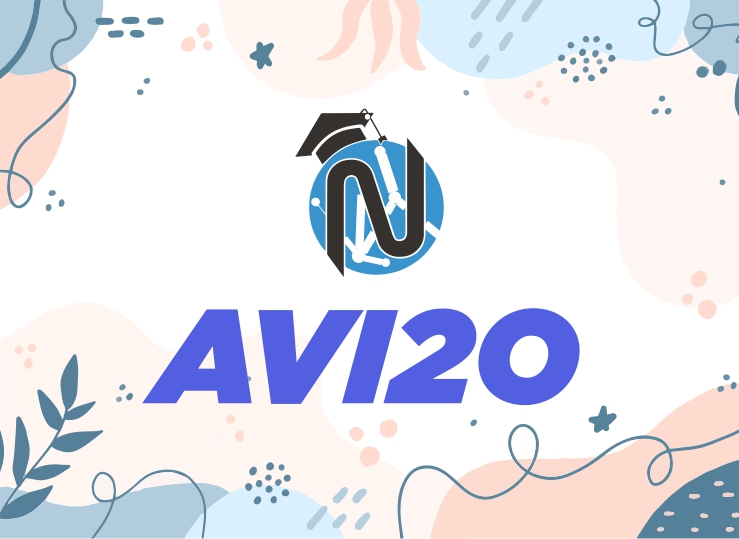
Visual Arts (AVI2O)
Course Description
This course enables students to develop their skills in producing and presenting art by introducing them to new ideas, materials, and processes for artistic exploration and experimentation. Students will apply the elements and principles of design when exploring the creative process. Students will use the critical analysis process to reflect on and interpret art within a personal, contemporary, and historical context.
For Ministry Guideline Click Here
| Units | Descriptions | Length (Approximately) |
|---|---|---|
| Unit 1 | The Artist’s Point of View This is the first of five units. The central theme is the student as an inquiring artist. The teacher, as a facilitator, can direct students to question how they create. As an inquiring artist, the students will investigate how their creativity happens. The three essential questions in this unit, are linked to the strands in The Ontario Curriculum, Grades 9 and 10, The Arts, 1999. These questions will help the students find creative ideas, reflect on where original ideas come from, and explore how ideas are developed and improved. In the Grade 10 profile, students investigate creative theory. Through guided discovery and activities, teachers will direct students to explore a variety of media. Students will use drawing techniques, a review of the elements and principles of design, and activities that foster the creative process. |
18 hours |
| Unit 2 | The Artist Deals with Place, Time, and Spaces In this unit, students will discover how the influence of place, time, and spaces also affect art that is produced by a culture or society. Students will be given the opportunity to compare and contrast different artistic approaches as seen in two different works of art in order to discover commonalities and differences based on place, time, and spaces. Activities in this unit include a landscape watercolor painting, a written and visual interpretation of architecture and a mixed media composition based on a literary source. |
23 hours |
| Unit 3 | The Artist Investigates Mathematical Measurement of Art In this unit, students will investigate connections made between the importance of mathematical inquiry and art in the Renaissance Period. The Ontario Curriculum, Grade 9 and 10, The Arts, 1999 states, “Links can be made between the arts and other disciplines” (page 4). Any prior learning for Mathematics that is applicable to this unit would have occurred for students in Grades 1 – 8 Mathematics expectations for geometry. Like the Renaissance artists, students will be encouraged to make “inquiries” about their art and the processes available to them. They will learn to use mathematical ratios and a system of proportions to create pleasing and balanced compositions. The three essential questions of this unit will assist teachers in making mathematical connections to art. Renaissance artists also drew upon the knowledge of the Greek and Romans. They also used ratios such as the Golden Section, to create balanced and pleasing compositions. The Golden Section uses the proportion of 1 to 1.6 to create balance in a composition. This ratio is also found in many objects in nature, such as human anatomy, shell spirals, and natural spiral forms. Students will learn how to use this ratio as they create their own painting. Teachers can adapt the Golden Section painting formula for most students in their classroom. Teachers will find suggestions for remediation, consolidation, and enrichment activities in this unit. Select the appropriate activities based on your students’ abilities and needs. Refer to Appendix J to learn how to construct the Golden Section. |
23 hours |
| Unit 4 | The Artist Makes a Statement The central theme of this unit is the role of the artist in shaping society. Students will investigate how artists have created artworks that shape and form contemporary civilization. Artists have designed buildings, furniture, clothing, and typefaces for print materials. Artists have influenced the look of past and present societies. Artists who present messages in their work on contemporary issues, such as Jane Ash Poitras, Carl Beam, Joyce Weiland, Michael Snow, and Greg Curnoe, will be examined. Students will investigate how artists can change their world by creating designs for living through posters and wearable art. They will also explore the ever-changing world and subject matter of fine and applied art. |
20 hours |
| Unit 5 | I Am the Artist: The Window of My Mind In this unit, students use art production, analysis, and critical thinking to consolidate student learning. The culminating activity for this unit challenges students, requiring them to apply concepts attained in the course. It provides them opportunity to express their own ideas about their individual creative process. In this activity, students must represent the content of the course in a visual manner. This unit is the summative evaluation of student achievement, based on the expectations and the achievement chart for this course. The unit represents 30% of the final mark. (See Program Planning and Assessment, The Ontario Curriculum, Grades 9 and 10, 1999, p. 11.) |
20 hours |
| Final exam review (2hrs); Final culminating Task (2 hrs.) ; Final exam (2 hrs.) |
6 hours | |
Overall Curriculum Expectations
By the end of this course, students will:
- The Creative Process: apply the creative process to create a variety of art works, individually and/or collaboratively.
- The Elements and Principles of Design: apply elements and principles of design to create art works for the purpose of self-expression and to communicate ideas, information, and/or messages.
- Production and Presentation: produce art works, using a variety of media/materials and traditional and/or emerging technologies, tools, and techniques, and demonstrate an understanding of a variety of ways of presenting their works and the works of others.
By the end of this course, students will:
- The Critical Analysis Process: demonstrate an understanding of the critical analysis process by examining, interpreting, evaluating, and reflecting on various art works.
- Art, Society, and Values: demonstrate an understanding of how art works reflect the society in which they were created, and of how they can affect personal values.
- Connections beyond the Classroom: demonstrate an understanding of the types of knowledge and skills developed in visual arts, and describe various opportunities related to visual arts.
By the end of this course, students will:
- Terminology: demonstrate an understanding of, and use correct terminology when referring to, elements, principles, and other components related to visual arts;
- Conventions and Techniques: demonstrate an understanding of conventions and techniques used in the creation of visual art works;
- Responsible Practices: demonstrate an understanding of responsible practices related to visual arts.
Assessment & Evaluation of student performance
Formative assessments are learning practices that provide important feedback to student progress. Examples include homework and quizzes.
Summative assessments form a foundation for final mark allotment at the end of the unit, term and final evaluation.
An achievement chart will be given to students at regular intervals and the purpose of the charts is to provide feedback to students in relation to content and performance strands.
| Knowledge and understanding | Communication | Thinking Inquiry and Problem solving | Application |
|---|---|---|---|
| 25% | 25% | 25% | 25% |
Unit Tests, Written assignments, presentations, Classroom Observations and Classroom conversations.










